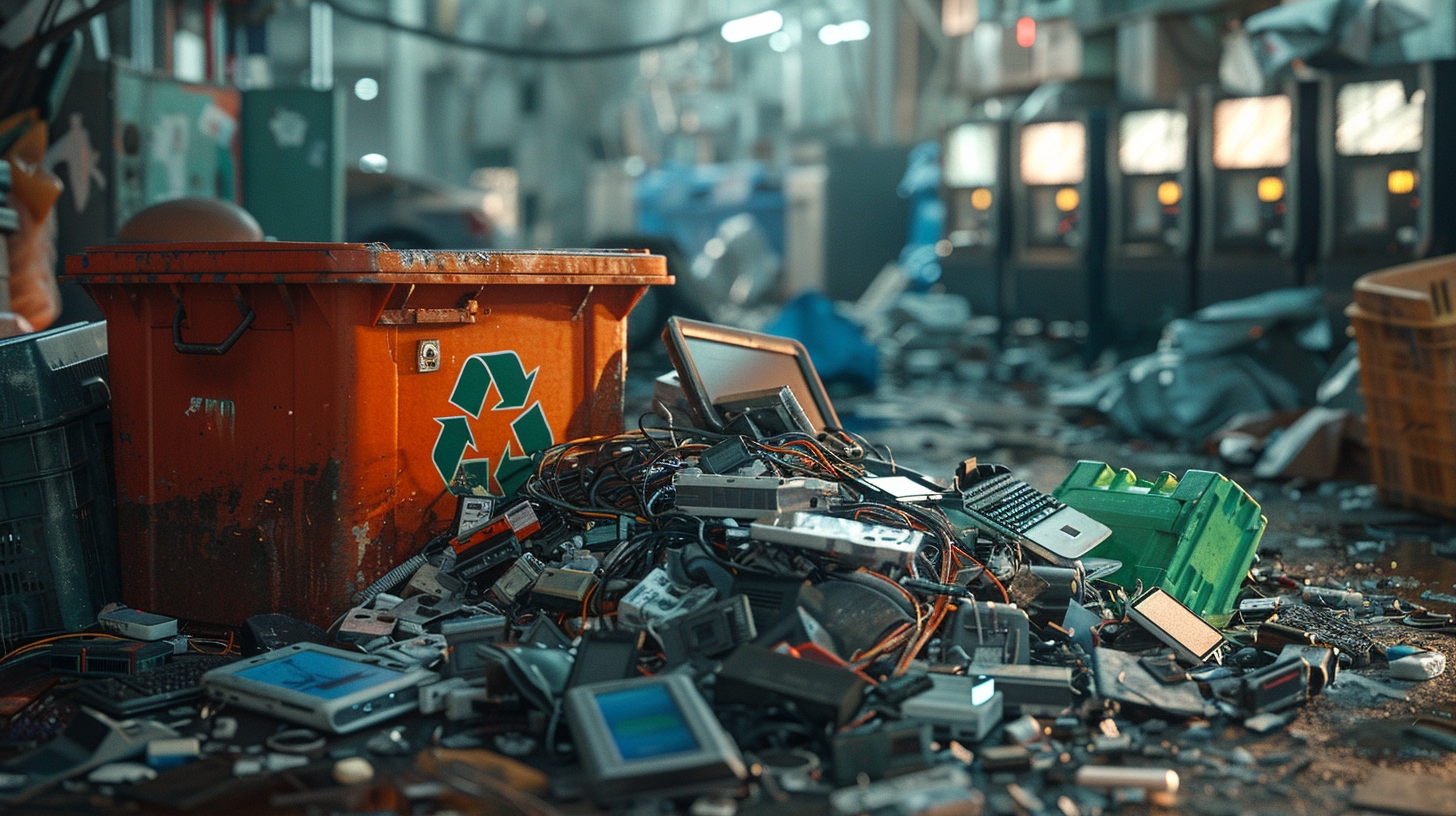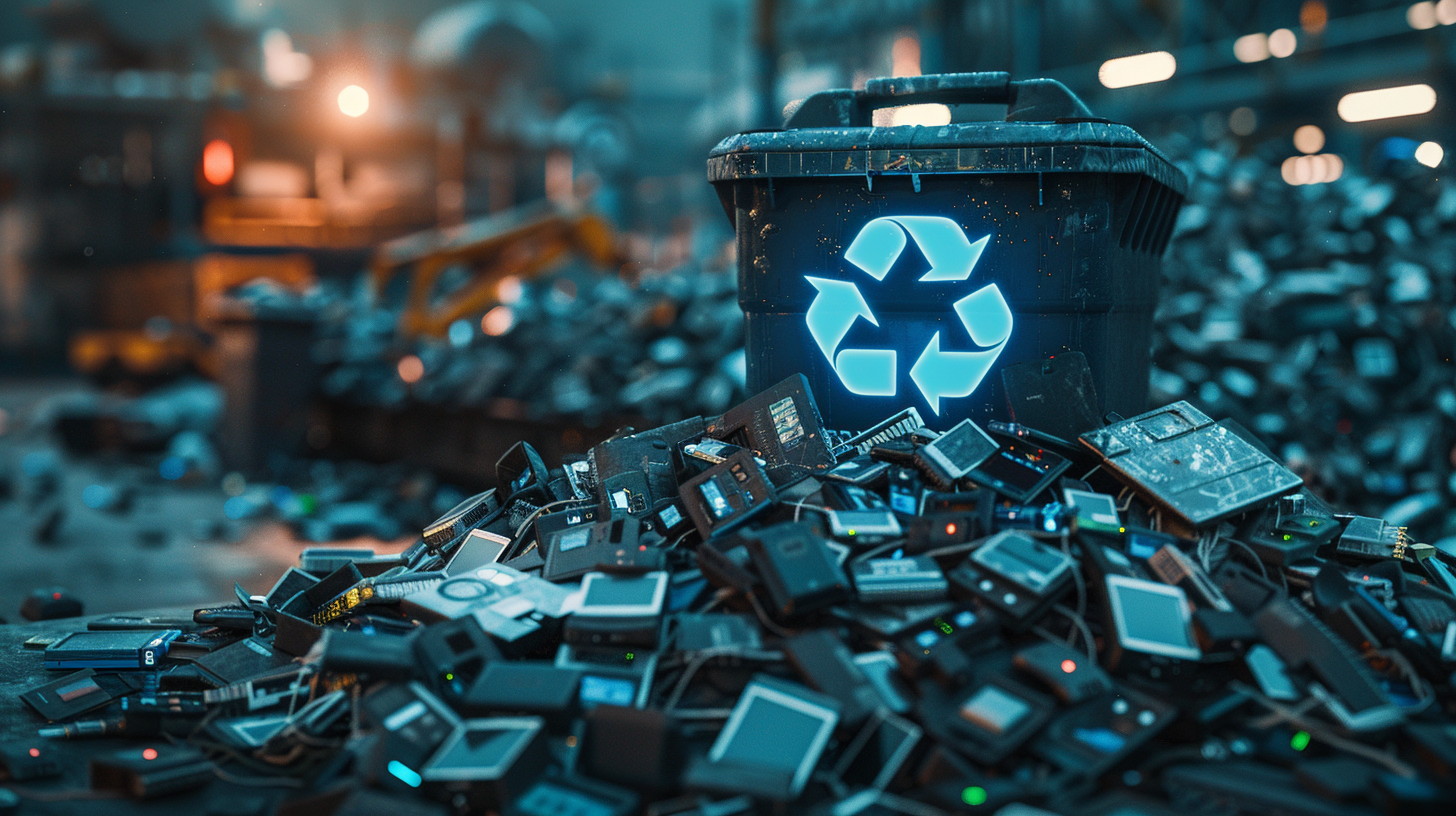E-trash, or electronic waste, refers to discarded electronic devices and components. This waste stream is one of the fastest-growing globally, driven by rapid technological advancements and increased consumer demand. This comprehensive article explores the environmental and health impacts of e-trash, current management challenges, innovative solutions, and future trends.
Keywords: e-trash, electronic waste, e-waste management, recycling, environmental impact, hazardous materials, circular economy
Table of Contents
Introduction to E-Trash
E-trash encompasses a wide range of electronic devices and components, such as smartphones, computers, televisions, and household appliances. These items often contain hazardous materials like lead, mercury, and cadmium, which can leach into the environment if not properly managed. The increasing volume of e-trash poses significant environmental and health challenges.
The Scale of the Problem
According to the Global E-waste Monitor 2020, approximately 53.6 million metric tonnes of e-waste were generated worldwide in 2019, with only 17.4% being recycled properly (Global E-waste Monitor 2020). This statistic underscores the urgent need for effective e-waste management strategies.

Environmental and Health Impacts of E-Trash
Improper disposal of e-trash has severe environmental and health consequences. Understanding these impacts is crucial for developing effective management strategies.
Environmental Impact
E-trash contains a variety of toxic substances that can contaminate soil, water, and air. When electronic waste is improperly disposed of, such as through open burning or landfilling, harmful chemicals are released into the environment. Heavy metals like lead and cadmium can accumulate in the soil, disrupting plant growth and entering the food chain. Furthermore, electronic garbage contributes to the accumulation of hazardous substances in the environment, affecting biodiversity and ecosystem stability.
Health Risks
Exposure to hazardous materials in e-trash can lead to serious health issues, including respiratory problems, neurological disorders, and cancers. Informal recycling practices, prevalent in developing countries, expose workers and nearby communities to dangerous levels of toxic substances. The World Health Organization (WHO) has highlighted the detrimental health effects of e-waste on children, who are particularly vulnerable to these toxic exposures (WHO, 2021).
Current Challenges in E-Trash Management
Managing e-trash presents numerous challenges, from collection and recycling to addressing health and environmental impacts. These challenges must be tackled comprehensively to mitigate the adverse effects of e-waste.

Collection and Recycling
The collection and recycling of e-trash are fraught with difficulties. Many consumers are unaware of proper disposal methods, leading to low recycling rates. Additionally, the infrastructure for collecting and processing e-waste is often inadequate, especially in developing countries. Effective e-waste management requires efficient collection systems and advanced recycling technologies to recover valuable materials and minimize environmental harm.
Economic and Logistical Challenges
Recycling e-trash is a complex process requiring significant infrastructure and investment. The lack of efficient collection systems, coupled with the economic viability of recycling operations, poses a major barrier. Many countries lack the necessary facilities to handle the growing volume of e-waste, leading to its improper disposal or export to regions with less stringent regulations. Effective e-waste management also involves significant logistical challenges, including the transportation and processing of large volumes of waste materials.
Regulatory and Policy Issues
Regulatory frameworks for e-waste management vary widely across different countries, leading to inconsistencies in how electronic trash is handled. While some regions have implemented stringent regulations to ensure the safe disposal and recycling of e-waste, others lack comprehensive policies. This disparity can result in the illegal export of e-waste to countries with less stringent regulations, where it is often processed under hazardous conditions. The development and enforcement of robust regulatory frameworks are crucial for effective e-waste management.
Innovations in E-Trash Management
Despite the challenges, several innovative approaches and technologies have been developed to improve e-waste management. These innovations aim to enhance recycling efficiency, recover valuable materials, and reduce the environmental footprint of electronic devices.

Advanced Recycling Technologies
Advanced recycling technologies have been developed to recover valuable metals and materials from e-trash. Techniques such as hydrometallurgical and pyrometallurgical processes enable the extraction of precious metals like gold, silver, and platinum from electronic components. Additionally, mechanical recycling methods, including shredding and separation, are used to process large volumes of e-waste efficiently. For example, the University of New South Wales (UNSW) has developed a microfactory that uses a combination of mechanical and thermal processes to recycle e-waste into valuable materials (UNSW Microfactory).
Circular Economy Models
The circular economy model emphasizes the importance of designing products with their end-of-life in mind, promoting reuse, repair, and recycling. By extending the lifecycle of electronic devices and reducing the demand for virgin materials, the circular economy can significantly reduce e-waste generation. Companies like Fairphone are leading the way by producing modular smartphones designed for easy repair and upgrading. This approach not only reduces e-waste but also encourages consumers to adopt more sustainable consumption habits (Fairphone).
Policy and Regulation
Effective policies and regulations are crucial for managing e-trash. Extended Producer Responsibility (EPR) is a policy approach that holds manufacturers accountable for the entire lifecycle of their products, including end-of-life disposal. EPR encourages producers to design more sustainable products and invest in recycling infrastructure. The European Union’s Waste Electrical and Electronic Equipment (WEEE) Directive is an example of successful legislation that has improved e-waste management across member states. The directive sets collection and recycling targets, ensuring that a significant portion of e-waste is processed properly (European Commission WEEE Directive).
Public Awareness and Education
Raising public awareness about the importance of proper e-waste disposal and recycling is essential. Educational campaigns and initiatives can inform consumers about the environmental and health impacts of e-waste and encourage responsible behavior. Programs like the E-Stewards Certification provide guidance and certification for responsible recycling practices, helping consumers and businesses choose environmentally friendly options for e-waste disposal (E-Stewards).
Future Trends in E-Trash Management
The future of e-waste management lies in innovative solutions and emerging technologies that can address the growing challenges of electronic trash. This section explores potential future trends that hold promise for sustainable e-waste management.
Technological Innovations
Technological innovations are crucial for advancing e-waste management. Emerging technologies such as artificial intelligence (AI), blockchain, and the Internet of Things (IoT) offer new opportunities for enhancing sustainability. AI can improve the efficiency of e-waste sorting and recycling processes by automating tasks and optimizing resource recovery. For example, advanced sorting systems equipped with AI can accurately identify and separate different types of electronic components, increasing the efficiency of recycling operations.
Blockchain technology can enhance transparency and accountability in e-waste management, ensuring that electronic devices are properly recycled and hazardous materials are safely disposed of. By providing a secure and tamper-proof record of the entire lifecycle of electronic products, blockchain can help track e-waste from production to disposal, preventing illegal dumping and promoting responsible recycling practices.
IoT devices can monitor the condition of electronic products and facilitate their repair, reuse, and recycling. Smart sensors embedded in electronic devices can provide real-time data on their performance and usage, enabling predictive maintenance and extending their lifespan. Additionally, IoT-enabled recycling systems can optimize collection routes and improve the efficiency of e-waste logistics.
Circular Economy Models
The circular economy model emphasizes the importance of designing products with their end-of-life in mind, promoting reuse, repair, and recycling. This approach is a stark contrast to the traditional linear economy, which follows a “take, make, dispose” model. By extending the lifecycle of electronic devices and reducing the demand for virgin materials, the circular economy can significantly reduce e trash generation. Companies like Fairphone are leading the way by producing modular smartphones designed for easy repair and upgrading. These modular designs allow consumers to replace or upgrade individual components, such as the battery or camera, without discarding the entire device. This not only reduces e-trash but also promotes a culture of sustainability and responsible consumption.
Moreover, the circular economy encourages businesses to rethink product design from the ground up. For instance, tech giant Dell has committed to using recycled materials in its products, including plastics recovered from e-trash. This initiative is part of Dell’s broader sustainability goals, which aim to incorporate circular design principles across their entire product line. By designing products for disassembly and recycling, Dell helps ensure that fewer electronic components end up in landfills, thus mitigating the environmental impact of e-trash. These efforts highlight the critical role that manufacturers play in transitioning to a circular economy.
Circular economy models also promote the concept of “urban mining,” where valuable materials are extracted from e-trash for reuse in new products. Urban mining is particularly relevant in the context of e-trash, as discarded electronics often contain precious metals such as gold, silver, and palladium. By recovering these valuable components from discarded electronics, urban mining can reduce the need for raw material extraction and minimize the environmental impact of electronic production. Companies like Umicore, a global materials technology and recycling group, are at the forefront of urban mining, demonstrating how e-trash can be transformed into a resource rather than waste.
The adoption of circular economy models also fosters innovation in recycling technologies. For example, Apple has developed a robot named Daisy, which can disassemble iPhones to recover valuable materials with high precision. This kind of technological innovation is essential for efficiently processing e-trash and ensuring that materials are recycled and reused to their fullest potential. Additionally, such advancements can lead to the creation of new industries and job opportunities centered around the recycling and refurbishment of electronic devices. By investing in these technologies and embracing circular economy principles, societies can make significant strides in reducing e-trash and promoting sustainable development.
The transition to a circular economy for managing e trash is not without challenges. It requires coordinated efforts from manufacturers, consumers, and policymakers to create an ecosystem that supports sustainable practices. Governments can play a crucial role by enacting regulations that mandate recycling and the use of recycled materials in electronic products. Incentives for companies that adopt circular economy principles and educational campaigns to raise consumer awareness about the importance of sustainable consumption can further bolster these efforts. As more stakeholders recognize the benefits of a circular economy, the collective actions taken will lead to substantial reductions in e-trash and a more sustainable future.
Enhancing Public Awareness and Education
Raising public awareness and education about the importance of proper e-waste disposal and recycling is crucial for driving behavioral change. Educational campaigns and initiatives can inform consumers about the environmental and health impacts of e-waste and encourage responsible behavior. Programs like the E-Stewards Certification provide guidance and certification for responsible recycling practices, helping consumers and businesses choose environmentally friendly options for e-waste disposal (E-Stewards).
Public awareness efforts should focus on promoting the benefits of recycling and the availability of e-waste collection programs. By making recycling convenient and accessible, consumers are more likely to participate in responsible disposal practices. Additionally, partnerships with schools and community organizations can help educate younger generations about the importance of e-waste management and sustainability.
Strengthening Global Partnerships
Global partnerships and collaboration are essential for addressing the complex and interconnected challenges of e-waste management. International organizations, governments, businesses, civil society, and individuals must work together to develop and implement effective e-waste management strategies. Multilateral agreements, such as the Basel Convention, provide frameworks for international cooperation on hazardous waste management, including e-waste (Basel Convention).
Collaborative efforts can
enhance the sharing of best practices, technologies, and resources, enabling countries to build their capacity for effective e-waste management. Global initiatives, such as the Global E-waste Statistics Partnership, aim to improve the availability and quality of e trash data, facilitating informed decision-making and policy development.
Conclusion
E-trash is a growing global challenge that requires comprehensive and innovative solutions. From technological advancements and policy improvements to public awareness and global partnerships, a multifaceted approach is essential for effective e-waste management. The development and enforcement of robust regulatory frameworks, combined with the adoption of advanced recycling technologies and the promotion of circular economy models, can significantly mitigate the environmental and health impacts of electronic garbage.
For small businesses, employees, job seekers, and students interested in exploring the potential of e-waste management, DigitalVital offers comprehensive services to help you navigate and succeed in this evolving landscape. Whether you need a CV review, publishing support, or specialized further education, we are here to assist you.
Visit DigitalVital Hub to learn more about our consultancy services, and stay ahead of the curve by integrating the latest advancements in e-waste management into your professional toolkit. Explore other articles on our platform to stay updated on the latest trends and insights in e-waste management and related fields.

